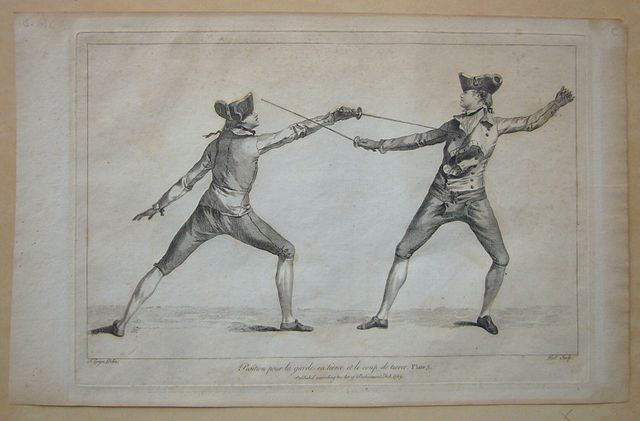Swordsmanship or sword fighting refers to the skills and techniques used in combat and training with any type of sword. The term is modern, and as such was mainly used to refer to smallsword fencing, but by extension it can also be applied to any martial art involving the use of a sword. The formation of the English word "swordsman" is parallel to the Latin word gladiator, a term for the professional fighters who fought against each other and a variety of other foes for the entertainment of spectators in the Roman Empire. The word gladiator itself comes from the Latin word gladius, which is a type of sword.
Roman gladius
The MS I.33 manuscript, dated to ca. 1290, shows fencing with the arming sword and the buckler.
Sabre duel of German students, around 1900, painting by Georg Mühlberg (1863–1925)
1763 fencing print from Domenico Angelo's instruction book. Angelo was instrumental in turning fencing into an athletic sport.
A sword is an edged, bladed weapon intended for manual cutting or thrusting. Its blade, longer than a knife or dagger, is attached to a hilt and can be straight or curved. A thrusting sword tends to have a straighter blade with a pointed tip. A slashing sword is more likely to be curved and to have a sharpened cutting edge on one or both sides of the blade. Many swords are designed for both thrusting and slashing. The precise definition of a sword varies by historical epoch and geographic region.
Swiss longsword, 15th or 16th century
Western Han jian
Apa-type swords, 17th-century BC
The swords found together with the Nebra sky disk, c. 1600 BC








